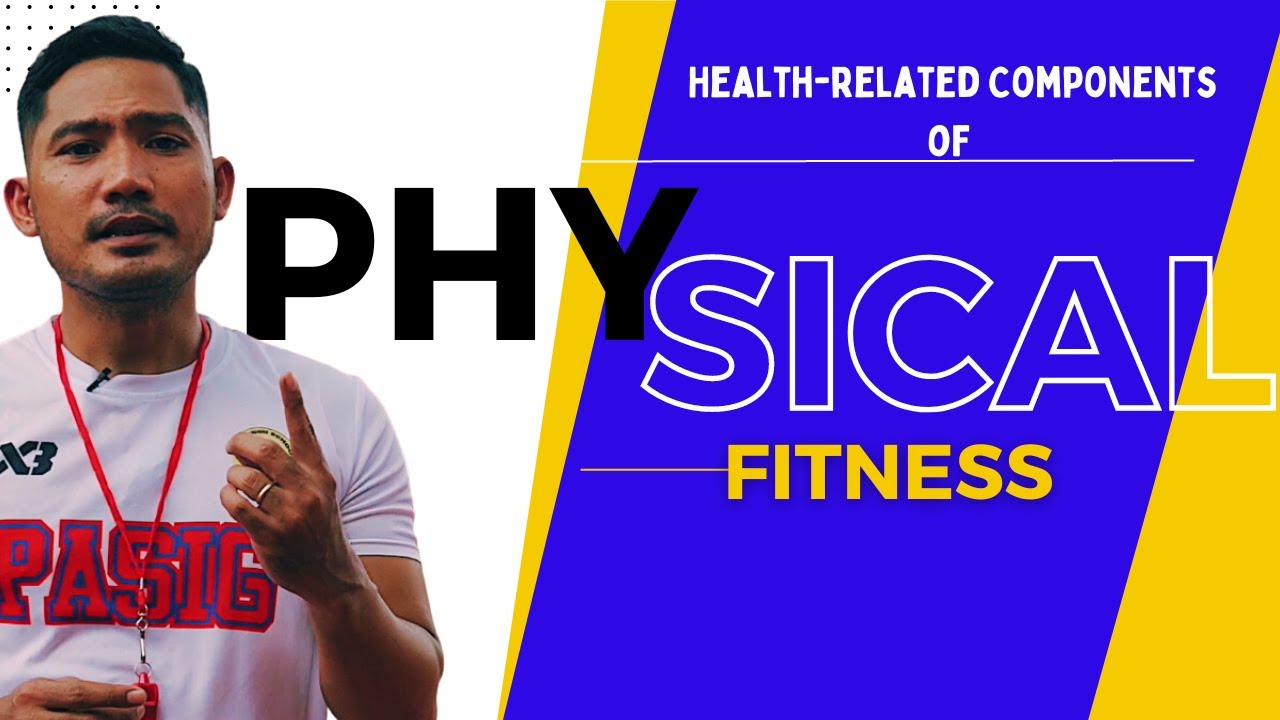SHS PE and Health Q1 Ep 3 Engaging in Moderate to Vigorous Physical Activity
Summary
TLDRIn this engaging health and physical education class led by Teacher Mike, students learn about the importance of different types of exercises, such as muscle, bone, and aerobic fitness. The lesson covers heart rate monitoring, designing a personalized fitness plan, and the fitness pyramid, which suggests the frequency of various activities. It also explains different exercise categories—like aerobic fitness, muscular strength, and bone strengthening—along with stretching techniques. The class wraps up with a quiz and encourages students to try Zumba, promoting an active lifestyle for a healthy body and mind.
Takeaways
- 💪 The episode focuses on improving health and maximizing fitness results, with an emphasis on muscle, bone, and aerobic exercises.
- 📊 Students are encouraged to set personal fitness goals by ranking their priorities from 1 to 11 based on what they want to achieve.
- 🏃♂️ The fitness pyramid highlights the importance of regular cardio activities (3-5 times a week), strength and flexibility exercises (twice a week), and reducing sedentary time.
- 💓 Aerobic fitness exercises such as walking, swimming, and jogging strengthen the heart and lungs, helping the body deliver oxygen more efficiently.
- 🦵 Muscle strength and endurance exercises like weight lifting and push-ups are essential for building and maintaining muscle mass and bone health.
- 🦴 Bone-strengthening exercises such as jumping and walking help maintain bone density and promote healthy bone growth.
- 🤸♀️ Flexibility exercises, including static and dynamic stretching, improve the range of motion in joints and reduce the risk of injury.
- ⏱️ Students are taught how to measure their heart rate using different pulse points (apical, carotid, radial, and temporal pulse).
- ❓ The script includes a quiz on various exercise-related topics, covering types of exercises, fitness goals, and training methods.
- 🎵 As additional homework, students are encouraged to try Zumba dancing, share their experiences, and optionally post it on social media with a hashtag.
Q & A
What is the primary focus of this lesson?
-The lesson focuses on understanding the importance of muscle, bone, and aerobic exercises, learning techniques to monitor heart rate, and creating a personalized fitness plan.
What are the main types of exercises discussed in the video?
-The video discusses aerobic exercises, muscle strengthening exercises, bone strengthening exercises, and flexibility exercises.
Why is aerobic exercise important?
-Aerobic exercise strengthens the heart and lungs, trains the cardiovascular system to efficiently deliver oxygen, and improves overall endurance.
What are some examples of aerobic exercises mentioned in the lesson?
-Examples of aerobic exercises include walking, swimming, jogging, and dancing.
How can you measure your heart rate during exercise?
-You can measure your heart rate by checking pulse points such as the apical pulse (chest), carotid pulse (neck), radial pulse (wrist), or temporal pulse (temple).
What is the difference between muscle strength and muscle endurance?
-Muscle strength refers to the ability of muscles to exert force during an activity, while muscle endurance refers to how many times you can repeat an activity or lift a certain weight.
What are bone strengthening exercises, and why are they important?
-Bone strengthening exercises involve weight-bearing activities like jumping, walking, and weight lifting. They are important for bone growth in children and maintaining bone density in adults.
What is the role of flexibility exercises in a fitness program?
-Flexibility exercises, like stretching, improve the range of motion of joints, reduce the risk of injury, and enhance overall body flexibility.
What is the difference between static and dynamic stretching?
-Static stretching involves holding a stretch position for 10-30 seconds and is done after warming up or after a workout. Dynamic stretching involves moving through a range of motion and is ideal for warming up muscles before a workout.
What is the fitness pyramid, and how does it guide physical activity?
-The fitness pyramid categorizes different physical activities by how frequently they should be done. It emphasizes reducing sedentary activities like sitting and increasing strength, cardio, and flexibility exercises regularly.
Outlines

此内容仅限付费用户访问。 请升级后访问。
立即升级Mindmap

此内容仅限付费用户访问。 请升级后访问。
立即升级Keywords

此内容仅限付费用户访问。 请升级后访问。
立即升级Highlights

此内容仅限付费用户访问。 请升级后访问。
立即升级Transcripts

此内容仅限付费用户访问。 请升级后访问。
立即升级浏览更多相关视频

HOPE 1– Module 1 The Healthiest and Fittest Me

Materi PJOK Kelas 7 Kebugaran Untuk Kesehatan Kurikulum Merdeka

latihan soal PJOK materi kebugaran jasmani

Health-related components in Physical Fitness

PE & Health 11 LESSON 1: Aerobic, Bone Strengthening Muscle Strengthening

Physical Education: Types of Physical Activities Aerobic, Muscular and Bone strengthening
5.0 / 5 (0 votes)
